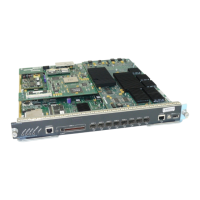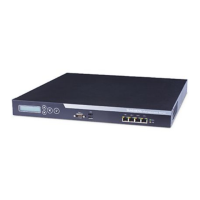7-2
Cisco Secure Desktop Configuration Guide
OL-8607-02
Chapter 7 Setting Up CSD for Macintosh and Linux Clients
Set the attributes as follows:
• Launch cleanup upon global timeout and Timeout after—Check to set a global timeout after which
CSD launches the Cache Cleaner. Use the drop-down list to set the timeout period.
• Let user reset timeout—Check to allow the user to reset the timeout period.
• Launch cleanup upon exiting of browser—Check to launch cache cleaning when the user closes all
browser instances.
• Enable cancellation of cleaning—Check to allow the user to cancel the cache cleaning.
• Secure Delete—CSD encrypts and writes the cache to the remote client’s disk. Upon termination of
the Secure Desktop, CSD converts all bits occupied by the cache to all 0’s, then to all 1’s, and then
to randomized 0’s and 1’s. Choose the number of times for CSD to perform this cleanup task. The
default setting, 1 pass, meets the US Department of Defense (DoD) standard for securely deleting
files. Following the completion of the task the number of times specified, CSD removes the pointer
to the file.
• Enable web browsing if Mac or Linux installation fails—Check to allow web browsing (but disable
other remote-access features) if Cache Cleaner installation fails.
• Web Browsing—Check to permit the use of the Secure Desktop to browse the web.
Note To ensure security, the Secure Desktop Manager supports only web browsing by clients in
unknown locations and access outside of the CSD environment.
• File Access—Check to permit the use of the Secure Desktop to access files on a remote server.
• Port Forwarding—Check to permit the use of the Secure Desktop to connect a client application
installed on the local PC to the TCP/IP port of a peer application on a remote server.
Click Apply All to save the running configuration to the flash device.
